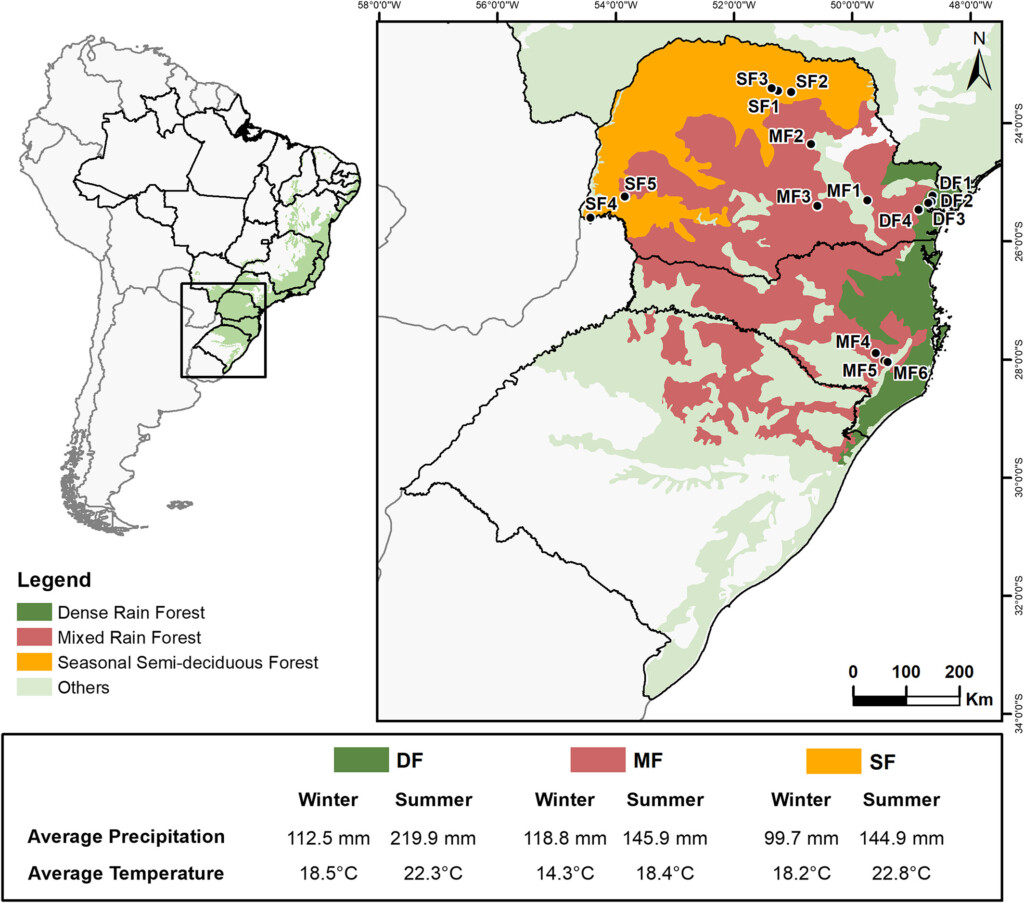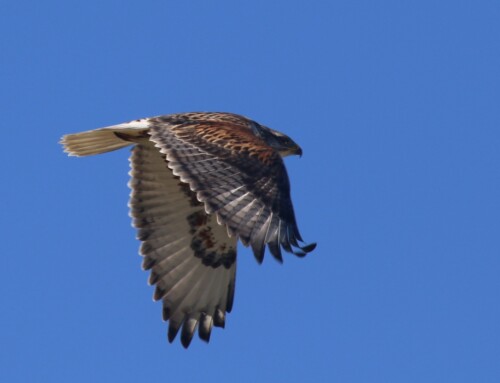
LINKED PAPER
Seasonality in niche occupation revealed through bird community functional structure in the southern Atlantic rainforest. Almeida, B. A., Bochio, G. M., Calsavara, L. C., Marques, F. C., & dos Anjos, L. 2023. IBIS. DOI: 10.1111/ibi.13189. VIEW
It is becoming increasingly recognised that seasonal environmental changes can cause variations in ecological community structure and composition over time, even in relatively climatically stable areas such as the tropics and subtropics. Such community changes can arise when seasonal variation triggers bird species movements, with recent studies in the Neotropics suggesting that these movements are not only important, but also more common than previously believed (Jahn et al. 2020). However, the underlying drivers of these movements are still poorly understood.
In a recent Ibis study, Bia A. Almeida and colleagues investigated bird community seasonality in three forest types in the Atlantic Rainforest which are subjected to different climatic conditions (dense rainforest, mixed rainforest, and seasonal semi-deciduous rainforest) to identify resource-related bird traits that could influence whether species remain in an area seasonally or throughout the year.
Investigating changes in niche occupation
A commonly acknowledged driver of tropical bird movement is seasonal limitation of food resources (Poulin & Lefebvre 1996; Studds & Marra 2011). In this study, seasonal changes in the community composition of bird traits related to resource use were investigated to verify the main changes in niche occupation between seasons (summer and winter) in each forest type. Community-level differences in species richness, diet composition, and generalisation (diversity of diet categories, foraging strata, and foraging substrates used) between seasons were assessed, and both species and trait temporal dissimilarity were also calculated for each forest type.

Figure 1. Map of the study area with distribution of the forest types and sampling points and main seasonal averages of rainfall and temperature for the forest types according to Fick and Hijmans (2017).
Differences between forest types and seasons
The results showed differences between forest types for all measured aspects of diversity. The main differences in bird community functional structure between seasons were related to species diet composition and generalisation. In general, it appeared that the proportion of invertebrate-feeding birds was higher in winter than in summer, and that species with a more generalist diet were more abundant in summer, while foraging strata generalists were more abundant in winter. More generalist species were also more abundant in the seasonal semi-deciduous forest, which is subjected to greater seasonal variations in rainfall, suggesting that generalists are better able to cope with changes in resource availability between wet and dry seasons.
Mixed rainforest is located at higher latitudes and altitudes than the other forest types, and experiences stronger climate seasonal variation and the coldest winters, likely leading to less abundant food resources in winter months. The results showed proportionally fewer frugivorous birds in mixed forest in winter, and higher species dissimilarity between seasons due to differences in richness, indicating that the seasonal effect on community niche occupation is stronger in mixed forest. This supports the suggested role of food limitation in bird migration, with species depending on more seasonal resources moving more.
This is the first study to explore seasonal variations in community functional structure of Neotropical birds, and revealed differences in community niche occupation between seasons related to resource use. Gaining insights into niche occupation changes can be a key first step in improving understanding of temporal fluctuations of populations, as well as the triggers of tropical bird species’ movements and migrations.
References
Fick, S.E. & Hijmans, R.J. (2017). WorldClim 2: New 1-km spatial resolution climate surfaces for global land areas. International Journal of Climatology 37: 4302-4315. VIEW
Jahn, A.E., Cueto, V.R., Fontana, C.S., Guaraldo, A.C., Levey, D.J., Marra, P.P. & Ryder, T.B. (2020). Bird migration within the Neotropics. Auk 137: ukaa033. VIEW
Poulin, B. & Lefebvre, G. (1996). Dietary relationships of migrant and resident birds from a humid forest in Central Panama. Auk 113: 277-287. VIEW
Studds, C.E. & Marra, P.P. (2011). Rainfall-induced changes in food availability modify the spring departure programme of a migratory bird. Proceedings of the Royal Society B: Biological Sciences 278: 3437-3443. VIEW
Image credits
Top right: Antonina Bay as viewed from the Serra do Mar Paranaense | Deyvid Setti e Eloy Olindo Setti | CC BY-SA 3.0 Wikimedia Commons
Blog posts express the views of the individual author(s) and not those of the BOU.
If you want to write about your research in #theBOUblog, then please see here




